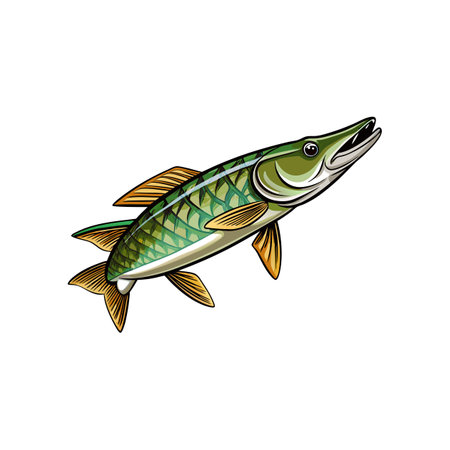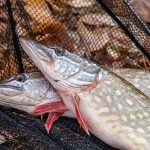1. Understanding the Limitations of Sonar in Shallow Waters
Fishing in shallow water—especially in depths of 3 feet or less—can be a real challenge when it comes to using sonar. While modern fish finders are great tools, they often struggle to deliver accurate readings in these ultra-shallow conditions. Let’s break down why that happens and what makes sonar performance tricky when youre working close to the bottom.
Why Standard Sonar Struggles in Less Than 3 Feet
Most sonar units are designed with deeper waters in mind, so when you take them into shallow areas like flats, creeks, or backwater bays, you might notice they dont perform as well. Here are the main reasons:
| Issue | Description |
|---|---|
| Signal Bounce | In shallow water, the sonar pulse has very little distance to travel before hitting the bottom and bouncing back. This fast return can confuse the unit, causing inaccurate depth readings or no reading at all. |
| Bottom Clutter | Because the transducer is so close to the bottom, it picks up too much detail—like rocks, weeds, or mud—which shows up as clutter on your screen and makes it hard to spot fish. |
| Narrow Cone Angle | Many standard sonar units use a narrow cone angle by default. In shallow water, this means youre only seeing a tiny area under your boat, making it easy to miss fish that are just off-center. |
| Turbulence & Noise | If youre using a trolling motor or moving around a lot in skinny water, the surface disturbance can create interference that messes with your sonar signal. |
What Happens Under 3 Feet?
Imagine this: your sonar sends out a sound wave from the transducer mounted at the bottom of your boat. In deep water, that wave has plenty of space to travel down and bounce back with clear information. But in just 2–3 feet of water, the signal barely leaves before its already coming back—with way less data and way more noise.
Common Visual Problems on Your Fish Finder Screen
- Muddy or fuzzy returns: The screen might look cluttered with no clear bottom line.
- No fish arches: Fish may appear as blobs or not at all due to poor signal separation.
- Constant depth fluctuation: Depth readings may jump around as the unit struggles to lock onto a stable bottom.
Tip:
If youre seeing lots of static or “snow” on your display while fishing shallow, chances are your sonar is picking up more junk than useful info. Adjusting sensitivity might help—but more on that later in this series.
2. Choosing the Right Transducer for Skinny Water
Fishing in shallow water—3 feet or less—comes with its own set of challenges, especially when it comes to sonar performance. Picking the right transducer is one of the most important steps you can take to get accurate readings in these conditions. Here’s how to choose a transducer that performs well in skinny water.
Frequency Matters
When fishing in shallow water, higher frequencies tend to work better because they provide more detail and a narrower cone angle. This helps avoid picking up too much bottom clutter and gives a clearer picture of whats below the surface.
Recommended Frequencies for Shallow Water
| Frequency (kHz) | Best Use |
|---|---|
| 200 kHz | Great for detailed images in shallow depths |
| 455/800 kHz (CHIRP/Side Imaging) | Excellent for structure and target separation in skinny water |
Mounting Options for Skinny Water
The way your transducer is mounted also plays a big role in performance. In shallow areas, its important to keep the transducer low enough to stay submerged, but not so low that it gets damaged by rocks or debris.
Common Mounting Types
| Mount Type | Pros | Cons |
|---|---|---|
| Stern Mount (Transom) | Easy to install; good for small boats | Can lose signal if boat planes or turns sharply |
| Trolling Motor Mount | Ideal for precise positioning; stays submerged in shallow water | May be affected by motor noise or turbulence |
| Through-Hull Mount | Protected from damage; great signal quality | Difficult installation; not ideal for very shallow areas |
Pro Tips for Better Performance
- If youre using a kayak or small skiff, consider portable transducers with suction cup mounts—they’re easy to adjust and remove.
- Avoid mounting near propellers or turbulent water flow, which can distort the sonar signal.
- Tilt the transducer slightly downward if you’re consistently fishing very skinny water to maintain better contact with the bottom.
Selecting the right frequency and mounting method can make all the difference when fishing shallow flats, backwaters, or creeks. The goal is to get clear, reliable returns without interference from bottom clutter or air bubbles.

3. Dialing In Your Settings for Maximum Clarity
Fishing in shallow water, especially in 3 feet or less, presents a whole different set of challenges when it comes to sonar use. The biggest issues are interference, clutter, and the difficulty of distinguishing between fish and bottom structure. But with the right settings dialed in, you can turn your fish finder into a powerful tool even in skinny water.
Adjusting Sensitivity: Less Is Often More
Sensitivity controls how much detail your sonar shows. In deeper water, higher sensitivity helps pick up distant targets. But in shallow water, too much sensitivity can overload the screen with noise from the bottom and surface.
Tip:
- Start with a lower sensitivity setting—around 50-60%—and slowly increase until you begin to see clear arches or returns without too much clutter.
- If youre getting a lot of false signals or static, back off on the sensitivity a bit.
Fine-Tuning Range Settings
Auto-range is convenient, but in shallow water it often doesnt perform well. Manually setting your depth range gives more control over what’s displayed on-screen.
Recommended Range Settings:
| Water Depth | Suggested Manual Range |
|---|---|
| 0 – 3 ft | Set range to 5 ft |
| 3 – 6 ft | Set range to 7-8 ft |
Using Noise Filters to Cut Through the Static
Noise filters help reduce interference from surface turbulence, vegetation, or electrical sources like trolling motors. Most modern fish finders have multiple filter levels (Low/Med/High).
Quick Tips:
- Start with “Low” and increase only if necessary.
- Avoid using “High” unless youre dealing with heavy interference—it can also filter out actual fish returns.
Improving Target Separation
Target separation refers to your sonars ability to distinguish between two closely spaced objects—like a fish sitting right above the bottom. In shallow water, this is critical because everything is packed tight together.
To Improve Target Separation:
- Use narrow cone angles (like 83 kHz instead of 200 kHz) for better resolution in tight areas.
- If your unit allows, adjust the “Surface Clarity” and “Bottom Lock” settings for sharper returns near the bottom.
The Bottom Line?
Tweaking your sonar settings isn’t just for tech-savvy anglers—it’s essential if you want clean, readable images in shallow water. Take a few minutes before each trip to adjust sensitivity, set your manual range, and fine-tune filters based on conditions that day. A little effort goes a long way toward spotting that next big bite hiding just under the surface.
4. Reading Signals: Interpreting Bottom Composition and Fish Targets
Fishing in shallow water—especially three feet or less—can be tricky when it comes to reading sonar. With so little depth, sonar signals get compressed, making it harder to tell the difference between vegetation, hard bottom, and actual fish. But don’t worry—we’ll break down how to make sense of what your unit is showing.
Understanding the Basics of Sonar Compression
In shallow water, your sonar doesn’t have much room to work with. The short distance between your transducer and the bottom means echoes bounce back fast and can overlap. This compression reduces clarity and makes objects look bunched up. That’s why knowing what to look for is key.
How to Tell What Youre Seeing
Let’s take a closer look at common sonar readings in shallow water:
| Target | Sonar Appearance | Tips for Identification |
|---|---|---|
| Vegetation | Fuzzy or wispy returns that rise off the bottom Might appear as a solid wall in dense grass beds |
Look for inconsistent heights and soft edges Use side imaging if available to see grass patches |
| Hard Bottom | Bright, thick return line on the bottom May show a second echo (double return) |
A clean line usually means sand or rock The brighter and thicker, the harder the surface |
| Fish | Small, isolated arches or dots above bottom Can be mistaken for debris in shallow depths |
Watch for movement between passes If it’s suspended just above structure—it’s likely a fish |
Tuning Your Unit for Better Clarity
Adjust Sensitivity Carefully
Turn sensitivity down slightly to reduce clutter without losing important targets. In shallow areas, too much gain will light up everything—including noise.
Switch Frequencies If Possible
If your unit allows it, try using higher frequencies (like 800kHz) for clearer detail in shallow water. Lower frequencies penetrate deeper but offer less resolution up close.
Slow Down Your Boat Speed
The slower you go, the better your sonar can update and display accurate images. Especially in skinny water, creeping along helps you pick apart what’s really under you.
Pro Tips from Local Anglers
- “I always use side imaging when I’m working shorelines.” – Helps separate fish from weeds along docks and flats.
- “Mark waypoints every time I find something clear.” – Saves time later when water clarity drops or lighting changes.
- “Fish move more in skinny water.” – Always double-check spots—fish may not stay put like they do deep.
The key to reading sonar in shallow water is practice. Once you start recognizing patterns and matching them with what youre seeing on the water, interpreting signals becomes second nature.
5. Real-World Shallow Water Scenarios and Pro Tips
Reading sonar in shallow water under 3 feet can be tricky, but with the right know-how and some hands-on examples, it gets a lot easier. Here are real-life scenarios from seasoned anglers and some go-to tips to help you make sense of your electronics when fishing flats, skinny creeks, or tucked-away bays.
Shallow Bay with Patchy Grass
Scenario: Youre cruising into a quiet bay with water just over 2 feet deep. The bottom has mixed sand and grass patches.
Challenge: Sonar returns are cluttered because grass creates false echoes and makes fish targets harder to separate.
Pro Tip: Switch to Down Imaging at low speed (under 3 mph) and reduce sensitivity slightly. Use color palette settings that highlight hard returns—fish will appear as brighter marks above softer grassy returns.
Muddy Bottom Backwater Creek
Scenario: A narrow backwater creek with soft mud bottom, only about 1.5 feet deep in spots.
Challenge: Soft bottoms absorb sonar signals, giving weak or unclear readings. Fish close to the bottom blend in.
Pro Tip: Turn on Fish ID mode if your unit offers it—it helps beginners differentiate between clutter and fish arches. Tilt your transducer slightly if possible to improve signal angle in super-shallow zones.
Sandy Flat with Scattered Structure
Scenario: A wide open flat with 2-3 ft depth and scattered oyster beds or rock piles.
Challenge: Hard structure can cause strong returns that mask nearby fish holding tight to cover.
Pro Tip: Use a combination of Sidescan and traditional 2D sonar. Sidescan helps you see the layout of structure left and right of your boat without spooking fish by driving directly over them.
Quick Reference: Pro Settings for Different Bottom Types
| Bottom Type | Sensitivity Setting | Best Sonar Mode | Extra Tip |
|---|---|---|---|
| Sandy/Hard Bottom | Medium-High | Sidescan + 2D | Avoid surface clutter by reducing surface noise filter |
| Muddy/Soft Bottom | Low-Medium | 2D + Fish ID (if available) | Tilt transducer slightly down for better clarity |
| Grassy Bottom | Low-Medium | Down Imaging | Select color palettes that enhance contrast between grass and fish |
Navigating Super Skinny Water (<3 Feet)
If youre running a jon boat or kayak through super shallow areas, even your transducer placement matters. Mounting too low risks damage; too high affects reading accuracy. For these situations, consider using a portable transducer arm or suction mount so you can adjust positioning on the fly.
BONUS PRO TIP:
If youre fishing early morning or late evening in shallow backwaters, watch for surface disturbances like nervous baitfish or wakes—these visual cues often do more than sonar in ultra-skinny water where electronics struggle most.
The key is staying flexible with your sonar settings, keeping speeds slow, and knowing how to read different types of feedback based on your environment. With practice, youll turn even the toughest shallow zones into productive fishing spots.


